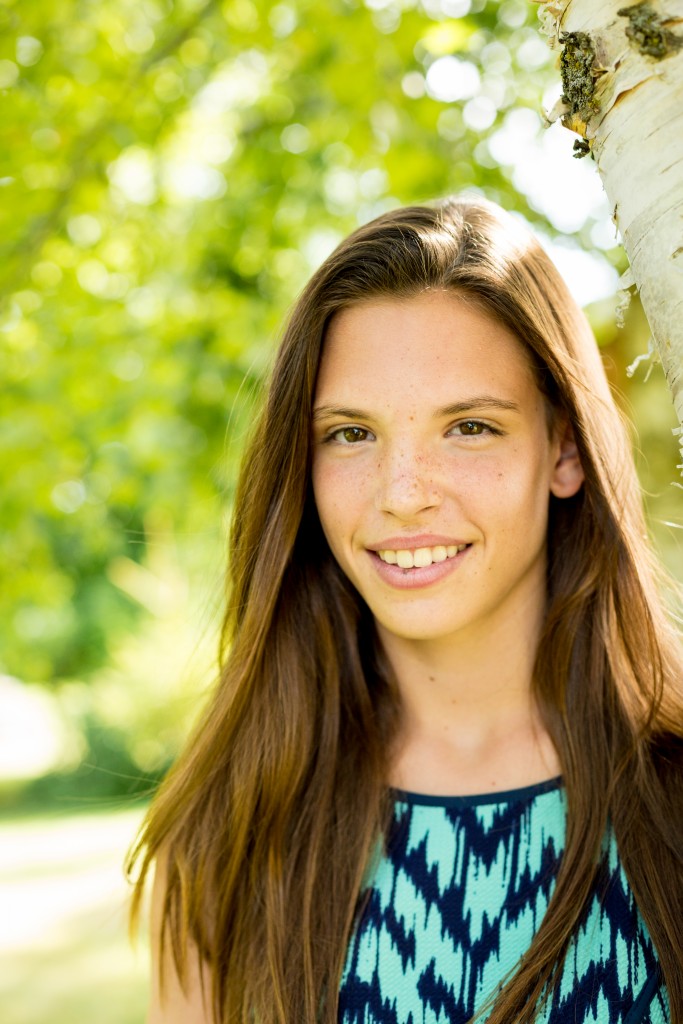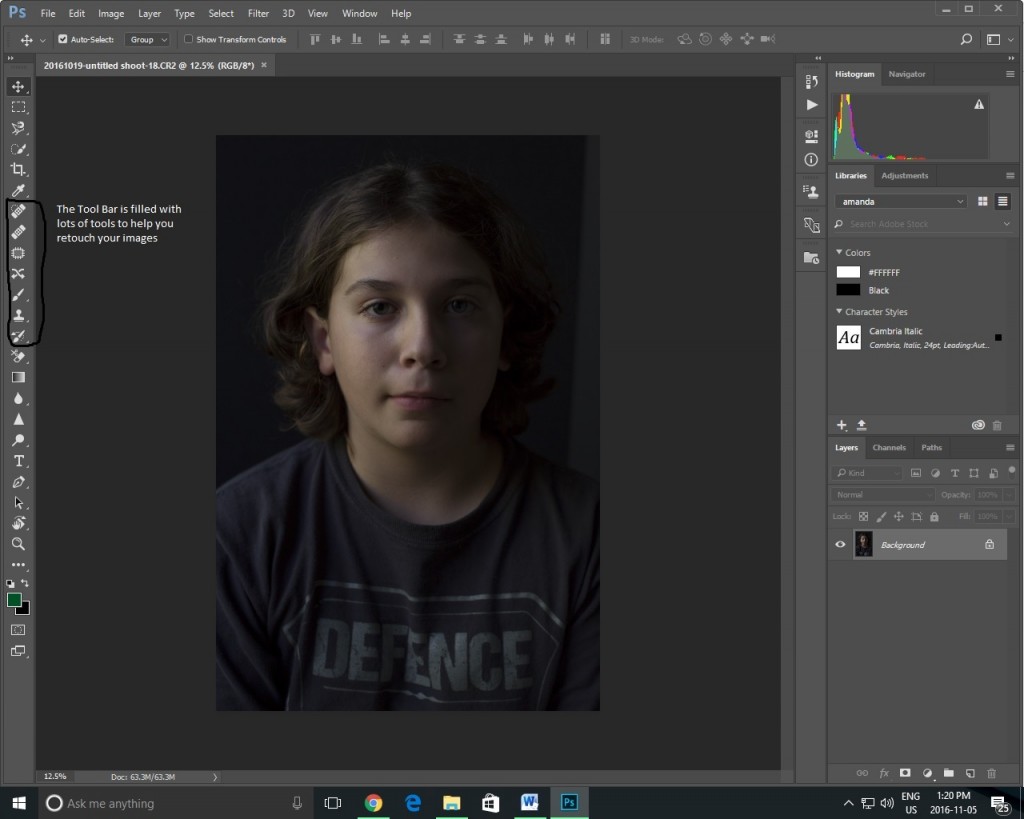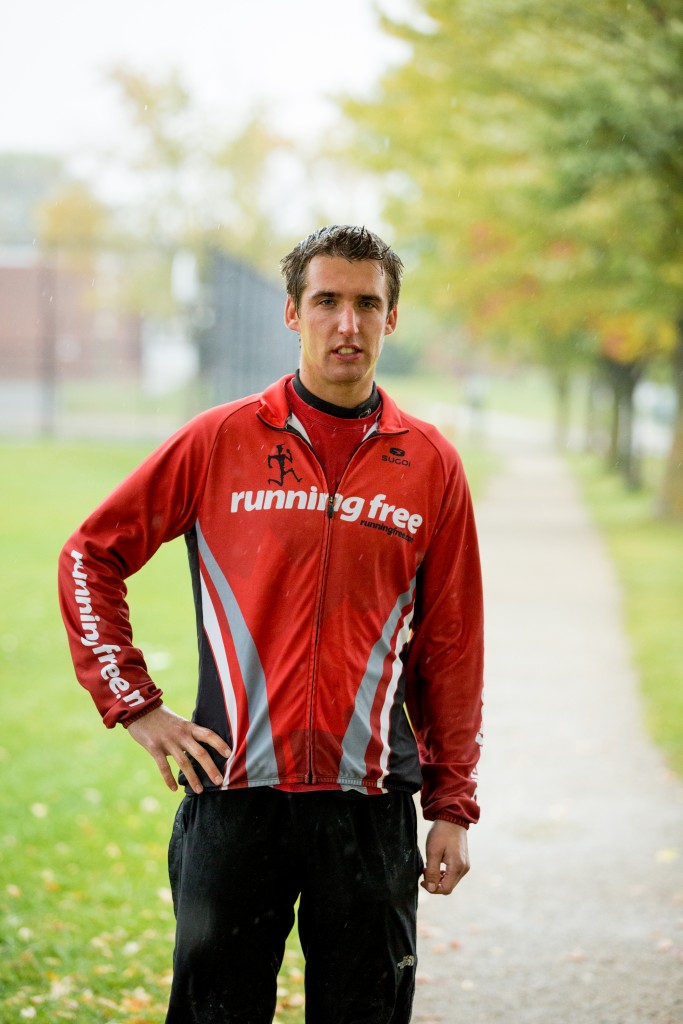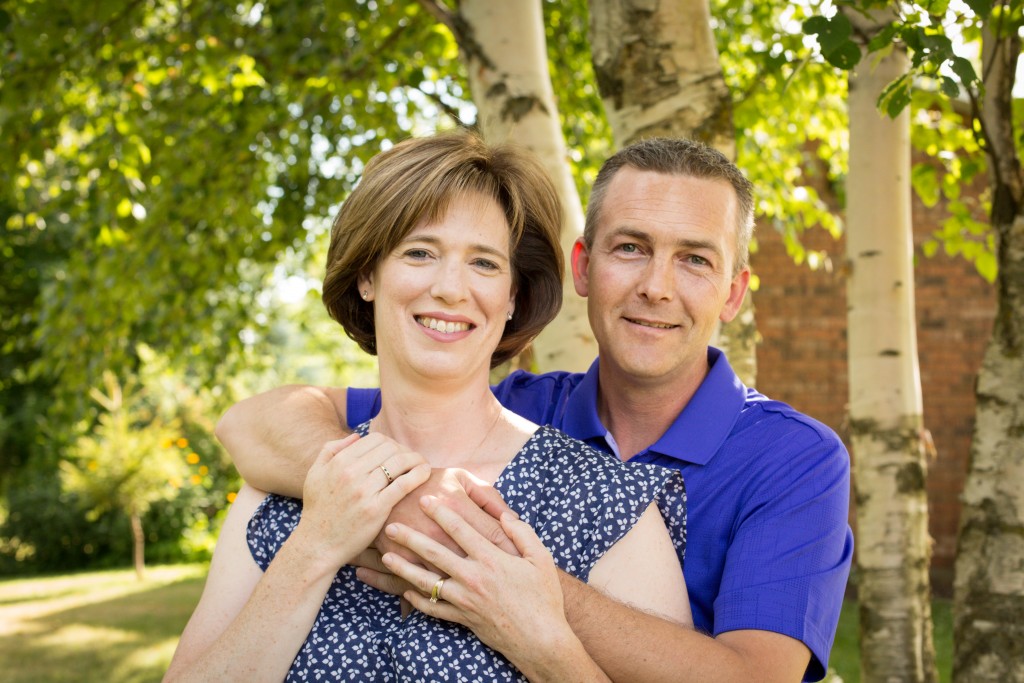Retouching is an essential part of the portrait photographer’s workflow. In this day and age, you must understand that clients want to look their best in portraits. This means we need to use Photoshop to refine their look. I often hear statements like “You will work your magic and make me look a little younger right?” It’s unavoidable people want to look perfect in their portraits. As much as I try to fight against it I have to retouch photos. I want to make some sales after all.
The use of retouching isn’t all negative, however. It’s is also a way to add your own unique style to your work. By adjusting white balance, vignette, saturation and contrast you can create an identifiable brand that will help you market your skills. It took me a while but I developed my own workflow and also my own brand. Clients know that my portraits are bright and bold. The colors are rich and I shoot portraits in an informal and relaxed manner. I also shoot exclusively with natural light. My clients like this look and choose me specifically because of the style of the portrait I create.

What exactly is Retouching?
There’s an important distinction to make when editing photographs. In order to edit images effectively, you should understand the difference between retouching and color correction.
The business dictionary defines retouching as….
“Alteration of an artwork, computer graphics, or photograph for its enhancement, introduction of desired features, or reduction or elimination of the undesired ones…”
This means that photo editors use tools like the healing brush, clone stamp, and patch tool to retouch/alter photographs. They will also apply filters and sharpening techniques to alter and enhance images.
Retouching Vs. Color Correction
Color correction is defined as …
1) A rendition of colors that satisfies your aesthetic intentions.
2) An equal distribution of the primary colors in the neutral values: black, white, and middle gray.

When correcting color the image itself is not altered but the highlights, low lights, colors, etc. are adjusted to enhance the photograph. Understanding the difference between these two functions is important. It will help you establish a clear and methodical method for editing and presenting images to clients. Generally, color correction takes less time than retouching and requires a lower level of editing skills. Most photographers teach themselves how to color correct an image but will take courses on retouching and using Photoshop. Photoshop is a huge program full of all kinds of different tools. It takes quite a while to learn the full functionality of the program.
Be Efficient it will increase your profitability!
Now that we have established the difference between color correction and retouching it’s time to talk about knowing when to retouch a photo and when to make color corrections. Being efficient and picking the right time to perform these tasks can help you in developing your earning potential.
Remember that smaller images generally hide flaws like acne better than larger images. If a client orders an image as a 5 x7 there may be no need to meticulously use the healing brush to smooth out every tiny blemish. Some blemishes may not be visible at such a small size. Remembering to take into account the size of the image and the profits you stand to can help guide how much actual retouching you make to an image. You need to ask yourself if taking 3 hours of your day to fully retouch an image you will sell for $20 is a worthwhile use of your time. Being a good photographer is also about being good at prioritizing your time
Stand out from the Crowd by Establishing a Style!
Everyone talks about branding these days. All marketing research points towards the importance of branding in increasing business profits. If you are going to survive in today’s market you need to understand how branding works. Creating a distinct style is a part of the branding process and being conscientious in the ways in which you retouch your images is a part of the branding experience. Take a look at the work of some of these successful portrait photographers. It’s time to complete a little exercise.
Look at the ways they edit their photographs. Use the questions below to help guide you in identifying their brand. Can you identify key elements that are consistent throughout their work? These elements help them to gain customers and sell their work.
- How much do they soften the skin?
- Do they use vignettes?
- Is the white balance cool, warm, or neutral?
- Are the images saturated or do they use pastel colors?
- How does the photographer handle contrast?
- Does the photographer use a lot of bokeh?
What did you find? What’s their style? They’ve carefully crafted a look they use for marketing their photography. Retouching is an important part of their brand and ultimately their profitability.
The choices you make in retouching your images will help to define your brand.
Knowing the Market Trends should inform your Retouching Style
It’s important to be able to adapt your retouching style to match the look and feel a client wants to portray. When I first started as a portrait photographer, I would shoot just about anything and in any style a client wanted. The result was a mix and match of looks that didn’t really create a distinctive brand. When people looked at my website they weren’t sure what they were going to get. It took me a long time to understand that I was losing business as a result. It wasn’t until I established a brand and a look that my results changed. People will search for you because the photographs you take suit a style and look they like. Once you get busy and your style is established then you can hand off your editing to others like Picsera. We will work with you to edit your images to fit your branding.
We suggest you take a look at the market trends. If you are going to specialize in studio-based portrait photography then research the trends and the styles. Don’t copy other photographers but be informed and develop your own style that is unique and yet follows market trends. This is a difficult balance to attain but we know you will find a brand that works for you.
Something else to consider is the type of portrait photography in which you wish to specialize. Each type has certain requirements and expectations. Clients looking for family portraits are going to be looking for something considerably different from a business executive needing headshots for Linked In. Study other successful photographers to help inform your editing choices
For those who might want to get into the market of Boudoir photography study the styles of masters like Crista Meola or Jen Rozenbaum. These two women have developed distinctive styles that appeal to a large number of clients. They are unique yet fit within market trends. Whatever direction you choose to go remember that the ways in which you edit your photographs can affect your profitability.

Outsourcing Retouching…Is it Right for Me?
Outsourcing photo retouching is still kind of taboo. Therefore, many photographers are still hesitant in trusting another artist with retouching their photos. We often hear doubts such as:
- “How are you going to get my style”?
- “I’m afraid I’m going to loose my touch”
But the truth is that if you have made a conscious effort to develop a personal style and understand what it takes to get to the final result, it is fairly easy to transmit this information to another artist. Here at Picsera, we make an effort to learn all of our client’s styles through personal phone consultations, surveys, and constant optimization.
What’s in it for You and Your Business?
- More time to shoot jobs
- More time to upsell services
- Faster turnarounds
As our client and friend James Schmelzer states: ” You can’t take care of the orders and go to the back and cook the food too” Meaning, that you can’t be a one-man show if you are serious about scaling your photography business. Focus on the shooting and let a company like Picsera help you with the editing.
One Final Word about Retouching and Shooting!
Portrait photographers should always shoot in RAW. As a photographer, your goal is to shoot the highest quality possible image so you can craft the best possible portrait for your clients. High-end images result in a successful business and this requires top-quality shooting and editing skills. Don’t take shortcuts when it comes to your photography use RAW files!
There are very few occasions in which you should be shooting in jpeg. An example would be a high-volume event in which the photographs will be used for something quick and simple. For example, I recently shot 25 hours’ worth of hockey portraits. By the end of the two days, I shot over 7500 images. There was no way each image was going to be edited using a classic workflow. Instead, we created jpeg settings in the camera and then shot each image so that they went straight to the clients as proofs. It was the most efficient use of our time. If I had tried to edit each image using my regular workflow it would have taken me a month to complete the job. Instead, this job was about getting high-quality shots as quickly as possible. My client was paying me by the hour and efficiency was the key to success. Sometimes shooting jpegs is inevitable.
If for some reason you have to shoot in jpeg. Be sure to give yourself the best possible image to work with. Use the following jpeg settings to help you have workable images. Just remember shooting jpegs should only be done in extreme cases!
JPG Settings:
- Turn off/Limit Noise Reduction
- Sharpening – OFF
- Contrast – Neutral
- Vivid, Standard, Neutral, Landscape – Neutral (No color bias)
- Compression – Fine/Optimal
- Resolution – Highest Available Number
- Color Space – Adobe RGB 1998
- Vignette – OFF
In Conclusion
Retouching is important to manage a successful portraiture business. Be sure to educate yourself on all the possibilities and establish a method of retouching that enhances the profitability of your business. Use our practical tips as a starting point for fine-tuning your retouching. We are always happy to help with retouching to help you complete more jobs in time. Check out our retouchings services here.
You do the Shooting, We’ll Take Care of the Editing!
Photo editing can be very time-consuming and it takes away time from growing your business. Trust our team of experts to become your own virtual photo editing team without the hassle of managing or hiring! Get started by shopping our most popular services for pro photographers:
